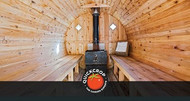Home Sauna vs Steam Room
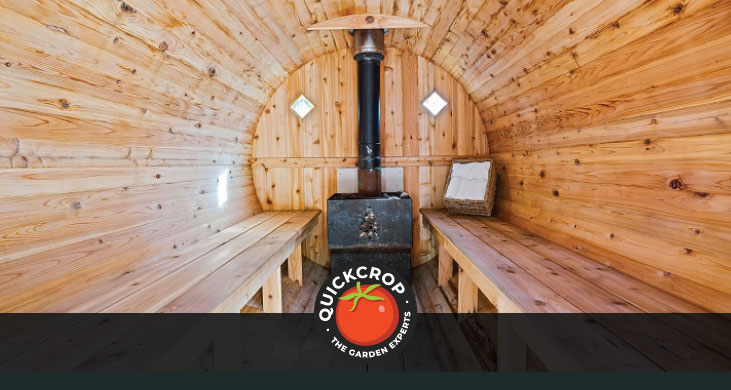
If you’re new to the whole world of ‘sitting in a heated room to relax’, it may not be immediately clear what the difference is between a sauna and a steam room. Some people will use the terms interchangeably, especially if they’re not big on semantics. The lines can be further blurred by references to ‘dry’ saunas and ‘wet’ saunas. Strictly speaking, all saunas are dry saunas (you can however create bursts of steam in a sauna by pouring water on to heated rocks). When people refer to ‘wet saunas’ they more than likely mean steam rooms, which have a very different design and method of heating - as well as different cultural origins.
If all this intro has done is confuse you more, then fear not. Read on as we go through the differences between saunas and steam rooms, as well as their benefits.

Wood Fired Barrel Sauna - 330
View Product
Heating
The most obvious comparison you can make between a sauna and a steam room is that it’s a dry heat environment versus a moist heat environment. This relates to the method of heating the space. Saunas traditionally use a central heater that can be wood fired, electrical or gas operated. Rocks are placed on top of the heater; these rocks then absorb and steadily release the heat. The effect is that the air is warmed by convective heat, and the warm air heats our bodies.
By contrast, steam rooms are heated by steam from boiling water, which is released via a steam diffuser outlet or generator. This results in a moist environment, with higher levels of humidity. The temperature in a steam room is typically lower, ranging from around 39-49°C (as compared to around 75-105°C in a ‘dry’ sauna).
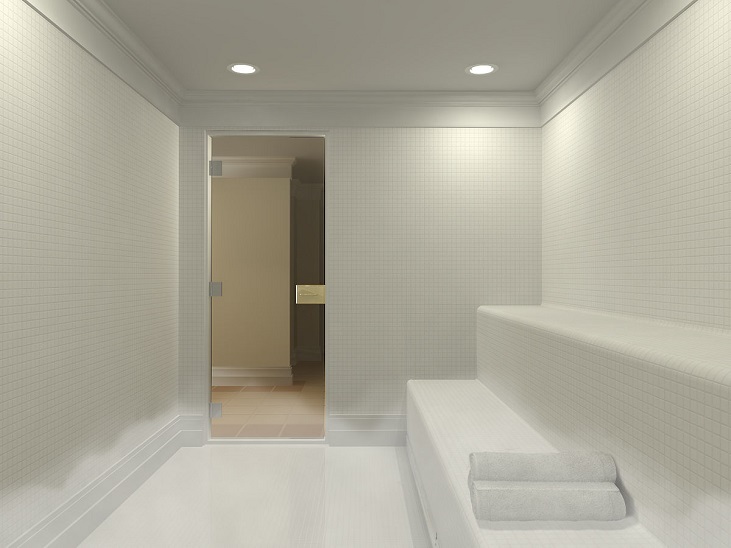
Despite the lower temperatures, a steam room can actually end up ‘feeling’ hotter than a traditional sauna. This is partly because of the very high humidity, which prevents sweat from evaporating off the skin. It can actually be more challenging to sit in this environment for periods of longer than 10-15 minutes than it is to do so in a sauna with its higher temperatures. Having said that, the cooler temperatures and moist heat can be to some people’s preference: it’s all very subjective and everyone will have their own experience.
With both saunas and steam rooms, something that can really enhance the experience is a period of ‘cooling’. This can take the form of sitting in the cooler outdoors, taking a cold shower or even plunging into very cold water. The temperature extremes can have an invigorating effect. You can cool off after your sauna/steam room session, or you can intersperse short sessions with periods of cooling off.

Thermo Pool Sauna
View Product
Humidity
Humidity is much higher in a steam room, where it can easily reach 100%. Humidity is essentially the amount of water vapour in the air. Since steam is the vapour produced by boiling, this will naturally result in very high levels. If you’re spending time in a steam room you can expect to see plenty of condensation dripping down the walls or tiles. Designs will often incorporate sloping floors or surfaces so that moisture can drain away.
Sweating is recognised as the body’s way of cooling itself down in high heat conditions, but it’s actually the evaporation of sweat off our bodies that is the crucial part. When we are in an environment with high humidity, sweat is much slower to evaporate. This is because there is already so much water vapour in the air that there’s essentially no more room to absorb it. When sweat evaporates more slowly (or not at all), our body will heat up more. This quick crash-course in science goes some way to explaining just why a steam room can feel more oppressively hot to us than a sauna.
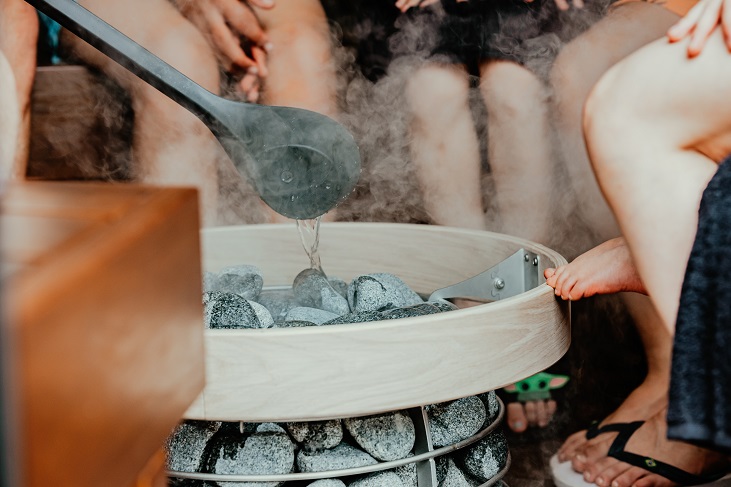
Humidity levels in a sauna on the other hand will rarely go above 20%. A key part of the sauna experience involves pouring water onto the heated rocks: this results in a burst of steam that is referred to as ‘löyly’ (or ‘leil’ in Estonia). The practice temporarily raises the humidity levels as well as providing a bracing sensation.
Design
Saunas can come in a range of designs, but they are commonly made from materials like cedar, spruce or pine wood. These materials are durable and have a natural moisture resistance. Inner wooden walls and benches are designed to expand and contract naturally in the hot environment, without warping or degrading. Wood does not conduct heat the way some other materials do, so it is ideal for sauna benches that people can sit on comfortably.

Wood Fired Barrel Sauna - 400
View ProductSteam rooms on the other hand tend to be made with waterproof materials like stone or tiles. They will often have a more sleek, streamlined or modern appearance. Home saunas can also be designed in this way, but they frequently have a more rustic design, particularly when it comes to outdoor cabin or barrel-type saunas. This charming aesthetic goes well with outdoor spaces, and adds to the vibe of sanctuary from worldly worries.
Steam rooms are usually designed with airtight sealed walls and ceilings. Effective ventilation is vitally important to avoid issues such as long-term moisture buildup or damage. Because of the high humidity levels, fixtures and fittings in a steam room should be made with rust-proof materials like stainless steel or brass. Ventilation is also important in saunas: it ensures healthy airflow and balanced heat dispersion
Related Article: The Health Benefits of Using a Home Sauna
Unique Benefits
Saunas and steam rooms share many of the same benefits. They both create a mentally rejuvenating environment, fostering a deep sense of well-being and serenity. Although the steam room environment has a somewhat milder level of heat, Sauna bathing or steam room can both help relax muscles or ease aches and pains.
The humid, moist air in a steam room can be very helpful for sinus congestion or dry respiratory tracts. Warm, moist air is believed to loosen mucus and relieve congestion. To enhance this effect you can add essential oils such as eucalyptus (or lavender to add to the relaxing, stress-relieving effect). This can have quite a soothing sensation, allowing you to breathe deeper. On the other hand, the high humidity of a steam room can be a little stifling the longer you sit in one.
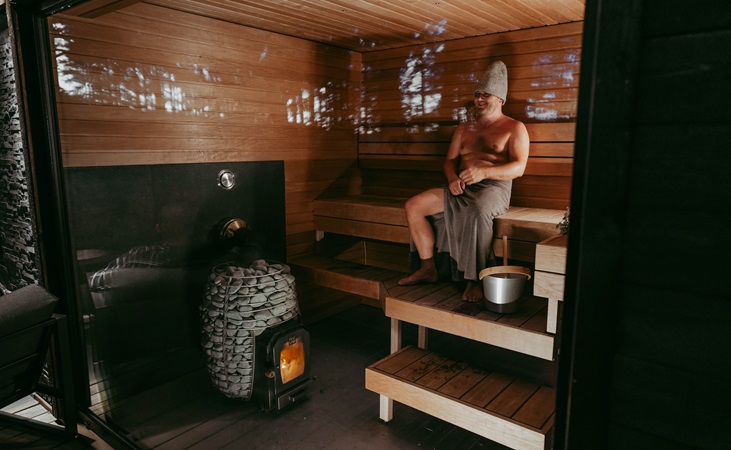
Maintenance
Saunas are (generally speaking) much more low-maintenance than steam rooms. A well-ventilated sauna should dry itself out effectively, and lingering moisture or mould is rarely an issue. It can be beneficial to use cotton towels to avoid staining the wooden benches with sweat.
Steam rooms should be regularly cleaned and well sanitised to avoid the spread of bacteria or viruses. Warmth and high moisture combined provide ideal conditions for mould growth. Again, cleaning is also important with a sauna but it shouldn’t take up as much of your time.
To avoid structural damage, it’s important that the steam room is ventilated effectively. Ventilation systems will need to be regularly inspected to ensure that they are in good working order. (This needs to be done with saunas as well, but less often - and it’s often more obvious in a ‘dry’ sauna when there’s some kind of issue with airflow.)
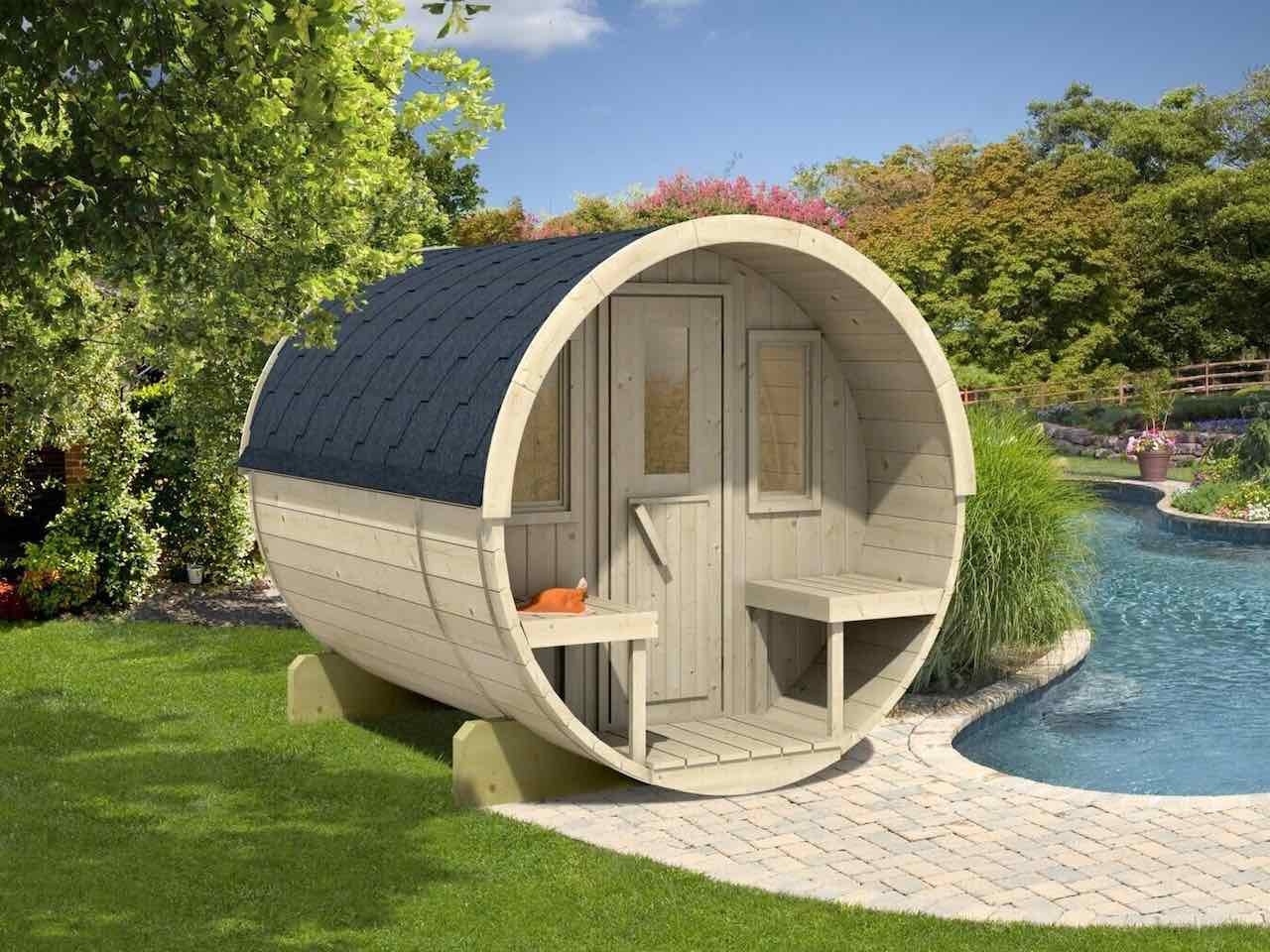
Wood Fired Barrel Sauna - 280
View Product
Installation
Although it depends on where you are planning to situate it, traditional saunas are generally a lot easier to install. Outdoor barrel-type saunas are perhaps easiest of all: they can be self-assembled in a garden or patio area, and if the sauna is wood-fired (with passive ventilation) there will be no need to stress about power sources, connections and so on. Saunas that are adapted to indoor spaces will be somewhat more complex, and you are best contacting tradespeople to help with the install.
With steam rooms, there are more things to take into account when it comes to installation. The steam generator will require plumbing. The generator will require electricity, as well as a steam head connected by a pipe. Lighting will need to be waterproof or moisture-resistant. Setting up a steam room in your home may well involve taking up flooring. It’s a job that’s going to be beyond even the most DIY-savvy of folk, so again - it will need professional installation and more than one tradesperson.
